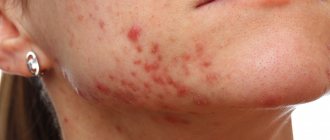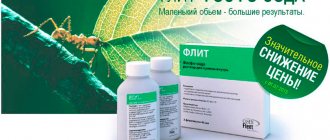Pharmacological action of Chloral hydrate
Chloral hydrate has a hypnotic, analgesic, anticonvulsant and sedative effect. In large doses it has narcotic properties. Chloral hydrate has a complex effect on the central nervous system. When prescribed in small doses, the drug weakens inhibitory processes, and in large doses reduces excitation processes. It is dangerous to use too high doses of Chloral hydrate, close to toxic, because they greatly inhibit the process of excitability of nerve cells.
Chloral hydrate has a pronounced irritant effect on the mucous membranes of the stomach and intestines, so it should be prescribed only in diluted form together with enveloping agents.
Chloral hydrate is absorbed very quickly. Sleep, close to physiological sleep, occurs after about 15 minutes and lasts for eight hours.
CHLORAL HYDRATE. Chloralum hydratum.Synonyms: aguachloral, chloradorm, dormal, dormiben, hydral, etc.
Properties.
Colorless transparent crystals or finely crystalline powder with a characteristic pungent odor and a slightly bitter taste. Very easily soluble in water (3:1) and alcohol. It evaporates slowly in air and is hygroscopic. Aqueous solutions are neutral and decompose to form trichloroacetic acid (decomposition accelerates when heated).
Release form. Available in powder form.
Store with caution (list B), in a well-closed container, in a cool place, protected from light. Shelf life: 8 years.
Action and application.
Chloral hydrate is a typical hypnotic and narcotic drug; it also has a sedative, analgesic and sedative effect.
In small doses, chloral hydrate does not change the processes of excitation, but enhances the processes of inhibition. All reflexes decrease, and inhibitory ones increase. In large doses close to toxic, there is a complete disappearance of both food and defensive conditioned reflexes, a weakening of the orientation reflex and relaxation of the body muscles.
After using chloral hydrate, anesthesia occurs within 15-20 minutes in horses and pigs, with almost no symptoms of excitement, and is characterized by a decrease or complete disappearance of pain sensitivity, relaxation of skeletal muscle tone, and weakening of reflex activity.
Chloral hydrate is used as a hypnotic and narcotic during various operations on animals intravenously, orally or rectally in the form of a 5-7-10% solution with coating substances that reduce its irritating effect on the mucous membrane of the stomach and intestines.
As a sedative and antispasmodic agent, chloral hydrate is used for overexcitation of animals, poisoning, spasmodic colic, blockage and narrowing of the esophagus, acute flatulence of the intestines, tetanus, strychnine poisoning and other convulsive conditions, painful straining and prolapse of the uterus and rectum, and coprostasis.
Doses (g/kg) intravenously
(as an anesthetic): horses 0.1-0.15, pigs 0.15-0.2, sheep and goats 0.2-0.25;
orally
(as a sedative and anticonvulsant): horses, sheep, pigs, rabbits and foxes 0.1 g/kg.
Chloral hydrate is contraindicated in severe diseases of the cardiovascular system, liver, kidneys, lungs and severe exhaustion.
Contraindications
According to the instructions, Chloral hydrate cannot be used to treat patients suffering from severe diseases of the cardiovascular system, kidneys and liver. Other contraindications to the use of Chloral hydrate are:
• Alcohol or drug dependence currently or in history;
• Esophagitis, gastritis, peptic ulcer (if the drug is administered orally);
• Proctitis, colitis (if the drug is prescribed as an enema);
• Intermittent porphyria.
Chloral hydrate should be administered to pregnant women with great caution. With its long-term use in newborns, withdrawal syndrome may occur.
The drug penetrates well into breast milk and causes a sedative effect in infants. Therefore, if it is necessary to use Chloral Hydrate, breastfeeding should be discontinued.
§ 15. CHLORAL HYDRATE
Chloral hydrate
or
- colorless crystals or finely crystalline powder with a characteristic pungent odor and slightly bitter, soluble in water, ethyl alcohol, diethyl ether and chloroform. Chloral hydrate is hygroscopic and evaporates slowly in air.
Application. Effect on the body.
Chloral hydrate is used in medicine as a sedative, hypnotic and analgesic. In large doses, chloral hydrate can cause poisoning. The toxic effect of chloral hydrate is similar to chloroform. It is used for mental disorders and as an anticonvulsant for tetanus, eclampsia and other diseases. In certain doses, chloral hydrate is used as a hypnotic.
Metabolism.
Chloral hydrate is quickly absorbed into the blood from the alimentary canal. It is metabolized in the body. The metabolites of chloral hydrate are trichloroethanol and trichloroacetic acid. It is believed that the toxic effect of chloral hydrate on the body is due to the formation of trichloroethanol. Trichloroacetic acid can be formed in the body in two ways: directly from chloral hydrate and from trichloroethanol. Trichloroethanol is excreted from the body in the urine as a glucuronide. After death resulting from chloral hydrate poisoning, a certain amount of it unchanged can be found in the liver and stomach.
Detection of chloral hydrate
Chloral hydrate gives all reactions that are used in chemical toxicological analysis to detect chloroform. This is explained by the fact that the reactions to chloroform used in chemical toxicological analysis are carried out in the presence of an alkali, under the influence of which chloral hydrate decomposes to release chloroform:
To distinguish chloral hydrate from chloroform, a reaction with Nessler's reagent can be used. This reaction is produced by chloral hydrate containing an aldehyde group. Chloroform does not give this reaction.
Reaction with Nessler's reagent. When chloral hydrate reacts with Nessler's reagent, free mercury is released:
Executing the reaction.
Add 2-3 drops of Nessler's reagent to a few drops of the test solution and shake the liquid. In the presence of chloral hydrate in the test solution, a brick-red precipitate is formed, which then becomes dirty green.
This reaction is not given by chloroform, carbon tetrachloride, dichloroethane and ethylene chloride. Aldehydes and some other reducing substances react with Nessler's reagent.
Preparation of Nessler's reagent (see Appendix 1, reagent 40).
Difference between chloral hydrate and chloroform.
In addition to the reaction with Nessler's reagent, the following test can be used to distinguish chloral hydrate from chloroform: the distillate obtained after distillation of toxic substances with steam is tested for the presence of chlorinated hydrocarbons using reactions with chloroform. If chlorinated derivatives are present, part of the distillate is shaken 2-3 times with new portions of diethyl ether (5 ml each). The ethereal extracts are combined and filtered through a dry filter. The filtrate is collected in a porcelain cup and the diethyl ether is evaporated at room temperature. If there was chloroform in the distillate, then when diethyl ether is evaporated, it evaporates along with this solvent. If chloral hydrate is present in the distillate, after evaporation of the ethereal extract, it remains in the porcelain cup. To confirm the presence of chloral hydrate in the residue, add 5-7 drops of water to it. The resulting solution is examined for the presence of chloral hydrate using the reactions described above (Fujiwara reaction, isonitrile formation reaction, reaction with Fehling's reagent, etc.).
Preliminary test for chloral hydrate in urine.
For this purpose, the preliminary test described above, based on the Fujiwara reaction, is used (see Chapter IV, § 14).
CONTENT
PREVIOUS | NEXT
More on the topic:
- Chloral hydrate - pharmaceutical reference
FH. Describe the substance of Chloral hydrate
Chloralum hydratum
Chloral hydrate
2,2,2-Trichloroethanediol-1,1
С2Н3С1302 M. v. 165.40
Description. Colorless transparent crystals or fine crystalline powder
with a characteristic pungent odor and a slightly bitterish peculiar taste. Gigr
lumpy at high humidity. Slowly evaporates in air. Very
readily soluble in water, alcohol and ether, readily soluble in chloroform.
Authenticity . To 0.2 g of the drug add 1 ml of 1 N. caustic soda solution; a cloudy liquid with the smell of chloroform is formed.
An ammonia solution of silver is added to the same solution of the drug; a black precipitate forms.
Melting point 49-55°.
Pour LF into a mortar and grind by eye. Using a spatula, move a small amount of crushed powder onto a glass circle. We take a capillary. Push through the open tip and fill in the powder. Turn the capillary over so that the sealed end is at the bottom. We take the tube and throw the capillary down. In this way, the powder on the capillary is compacted. You need to hammer in 5 mm. If there is not enough, then turn the capillary over and fill the powder again. We put the capillary that we clogged on an elastic band to the thermometer. And so that the base of the capillary is in the middle of the mercury column. Place the mercury thermometer into the tube. Tube to the device. We turn on the device. First, set it to high, so that it warms, about 10 degrees before the expected melting temperature, and reduce the heating speed to 1. We carefully watch the capillary and the scale. When the first drop of powder appears, record the temperature. When the powder has completely become liquid, this is the end of melting. Turn it off.
Quantitation . About 0.3 g of the drug (exactly weighed) is dissolved in 35 ml of 0.1 N. caustic soda solution, stir and after 2 minutes an excess of 0.1 N. sodium hydroxide solution is titrated with 0.1 N. hydrochloric acid solution (indicator - phenolphthalein).
excess
remainder NaOH + HCl → NaCl + H2O
feq = 1. A control experiment is carried out in parallel.
1 ml 0.1 n. hydrochloric acid solution corresponds to 0.01654 g of C2H3Cl3O2, which in the preparation must be no less than 99.0% and no more than 101.0%.
Storage . List B. In a well-closed container, protected from light, in a cool place. Sleeping pill, anticonvulsant.
8. The pharmacy received a prescription for the manufacture of drugs. Prepare and dispense the dosage form according to prescription No. 814. Take: Collargol solution 2% - 10.0; Give. Label. 2 drops 3 times per day in the nose.
| Checking the pharmaceutical (physico-chemical, chemical and pharmacological) compatibility of prescription ingredients. Conclusion. LPs are compatible. Checking doses of substances of lists A and B, NEO registered substances. Medicines for external use – we do not check doses. There are no accounting substances. Design of the main label and warning notices for the labeling stage. (MU dated 07/04/97). |
Storage. In a well-closed container, protected from light.
| Calculations are carried out before the solution is made. The reverse side of the PPK m of collargol = 2 x 10 / 100 = 0.2 C max (%) = N/KUO = 8/0.61 = 13.1% 3%<13.1% volume increase does not take into account the KUO of collargol = 0 .61 ml/g Purified water: 20 ml Deviations: | The front side of the PPK is written out after the solution is prepared. The front side of the PPK is the date of the PPK for recipe No. 5 Collargoli 0.2 Aquae purificatae 0.2 ml Aquae purificatae 9.8 ml Vtot. = 10 ml Signatures: |
Technology:
We weigh out 0.2 collargol and place it in a mortar. We measure out the purified water. 10 ml. add 0.2 ml of purified water. To the collargol. Leave to swell. Rub until dissolved, add the rest of the water. Grind it. A loose lump of cotton wool is washed with hot water, and the collargol solution is filtered through cotton wool into a bottle for dispensing. Sealed, prepared for release: “External”, “Shake before use”, “Store in a cool place, protected from light”, “Keep away from children”, separate prescription number.

